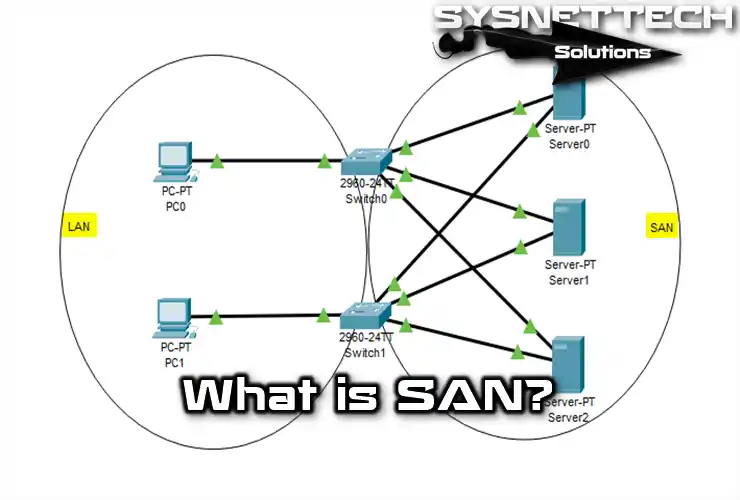Routers play a critical role in data transmission in structures we call networks. In short, they provide efficient communication between these networks. Therefore, if we understand the working principles of routers better, we will be able to increase our LAN performance. In addition, these devices use routing protocols while managing data packets. As a result, they form the backbone of modern networks.
In this article, I will tell you exactly what a Router is in computer LANs and how it works. I will also examine routing mechanisms and tables. In short, it does not matter if you are at the entry level of networking; I hope you will understand it.

What is a Router, and How Does It Work?
A Router is a network appliance that routes data on a LAN or WAN in the most efficient way. We also use it to get the best performance from an Intranet LAN.
In computer networks, we use a Router to manage traffic and set routes. In addition, these devices encapsulate data to move between incompatible LANs.
A Router reads the destination address and calculates the best path. Then, it delivers the packet to the destination. In short, if the packet is in a local area, it sends it directly to the recipient.
However, if the packet is for a different network, the routing device evaluates the traffic congestion. It also considers the number of hops, i.e., the number of routers.
What is a Router Used For?
A Router connects multiple networks and routes traffic. Your home equipment acts as a bridge between your Internet connection and your local network.
It also has the function of connecting different devices and switching data. However, Routers also have a radio unit that provides WiFi access.
A routing device manages the connection between your Internet connection and your LAN. This allows you to link multiple devices to the online world over the same Internet connection.
It also allows these devices to communicate on the LAN. In addition, a Router protects all your devices connected to the network. It also monitors which data is transmitted to which device.
How Does a Router Work?
IP packets cannot exceed a certain number of hops. The Router makes sure that you stay within this limit. For example, if there is no direct path between A and B, the Router sends the data to another device. This device may be an intranet or in a different city.
A router network device has at least two physical ports. Each port works in both directions and sends and receives data. In other words, if a port receives a packet, the routing process begins.
It then examines the header information in the IP packet. It then compares this information with the routing table. If the table contains the address, it forwards the packet to the exit port. The exit port then sends the data to the next Router or destination.
In some cases, the Router sends incoming packets to an area called the Input Queue. This area is in the device’s RAM and is related to the incoming ports. In other words, when traffic is heavy, the Input Queue may fill up.

As a result, some packets are lost. However, the TCP protocol handles these losses. TCP requests that the lost packets be resent. This continues until all packets reach the correct destination.
We can manage Advanced Router devices using software such as SNMP. This way, we can diagnose and solve network problems more efficiently.
However, Routers prioritize packets with QoS settings. Thanks to these settings, critical data is transmitted without delay. In addition, traffic management and control mechanisms are activated. These mechanisms prevent congestion in the network. As a result, data flow is not interrupted even in heavy traffic.
What Are Routing Tables on a Router?
In addition, TCP transmission uses the acknowledgment flag to acknowledge previous communications. Routers also use static or dynamic routing tables. For example, static tables are suitable for small intranet networks. On the other hand, dynamic tables are necessary in more complex networks.
Dynamic tables are constantly updated according to the traffic conditions. Thus, data is always routed in the best way. Of course, we create these tables with routing protocols.
Thus, we determine the most efficient paths in the network. For example, RIP routing is a protocol we use in such work. In addition, we widely use protocols such as EGP on the Internet.
Filtering Router Usage
Filters configured in routers are the first line of defense against LAN attacks. Filtering routers analyze every packet that moves between networks. In addition, a network administrator can set rules to allow or deny packets.
Therefore, we can apply different rules for incoming and outgoing packets. For example, when intranet users access the Internet, we block unwanted access from outside. In addition, we can perform a more detailed network analysis by recording the traffic.

If we do not filter, we allow packets to pass uncontrolled. Therefore, we make our network vulnerable to attacks. During the filtering process, the device reads the source addresses from the IP header. Then, it evaluates these addresses by comparing them with the filter tables.
Also, some addresses are dangerous and are added to the filter table. In this way, the Router rejects the malicious traffic. In this case, it examines the data in the IP header and the transport stack. As a result, there are two sets of headers in each packet. The first one is for data; the other one is for the transport stack.
Access Blocking in Filtering Method
Thanks to the different security levels, we can set various conditions for subnets. For example, we apply more restrictive rules for a department that contains essential data. On the other hand, we can create a structure with fewer restrictions for our engineering network.
Moreover, the filtering router also allows users to access services such as Telnet and FTP. However, we can restrict these services from accessing the Intranet. Plus, we prevent users on the LAN from accessing restricted data.
For example, we can restrict FTP requests outside the finance department. However, we can provide finance users with FTP access. Finally, we can also filter these services based on the source or destination port number.
In summary, the Router checks the source addresses in the incoming IP headers. As a result, if the source address is internal, it rejects the packet.
What Routing Protocols Can We Use in Modern Routers?
In modern Router network devices, we use some protocols to manage traffic and forward data. They developed these protocols to determine the best paths. In short, the most commonly used routing protocols are:

- Border Gateway Protocol (BGP)
BGP is commonly seen in large-scale ISP networks. This protocol routes data between autonomous systems (ASs). Also, BGP makes routing decisions based on LAN policies. In summary, we need to connect to the global Internet.
- Open Shortest Path First (OSPF)
We use the OSPF protocol mostly in corporate networks. This protocol calculates the best paths with link state algorithms. Therefore, OSPF is suitable for large and complex LANs.
- Enhanced Interior Gateway Routing Protocol (EIGRP)
As for EIGRP routing, we only use it on Cisco networks because it works on their products. It includes both distance vector and link state protocol features. In addition, it provides fast convergence and efficient routing in enterprise networks.
- Routing Information Protocol (RIP)
The older protocol, RIP, is suitable for small to medium networks. This protocol uses a distance vector algorithm based on hop count. So, while it is easy to configure, it is not sufficient for large structures.
- Interior Gateway Routing Protocol (IGRP)
IGRP is rarely used in modern networks anymore. This protocol developed by Cisco acts as a distance vector. As a result, it is suitable for small LANs and is an improvement over RIP.
As a result, these protocols allow routers to share routing information. They also adapt to changes in LAN topology. For these reasons, you should look at the size and complexity of your network when choosing a specific protocol.
What are the Types of Routers?
Routers also serve different functions in the operation of networks, particularly in meeting the needs of home, corporate, or other infrastructures.
- Broadband Routers
These routers are standard in homes and small businesses. They provide internet connectivity and manage local devices. They also offer features such as firewall & wireless access.
- Core Routers
Core Routers are usually used in large networks. These LANs are generally in ISPs and telecom companies. They provide maximum data transmission by processing high data volume. In addition, these are equipment with high-speed interfaces.
- Edge Routers
These routers work at the perimeter of a LAN. In fact, these devices form the interface between the internal network and the external networks. They also provide security measures and network address translation. In short, they have VPN & QoS functions to increase performance and security.
- Wireless Routers
Wireless Router devices provide a WiFi connection. That is, we use it frequently in our homes or workplaces. In addition, they support the latest wireless standards and have guest network and parental controls to increase security.
- Virtual Routers
Virtual routers provide software-based routing. We often hear about them in cloud environments. These devices offer both flexible and scalable solutions. Plus, they allow for dynamic allocation of LAN resources.
How Do Routers Secure Data Between Networks?
Nowadays, data flow between network structures is significant. That’s why security is critical during information transfer. For these reasons, Router uses the following for security in LAN or WAN:
- Access Control Lists (ACLs)
Most importantly, it uses ACLs to control traffic. It also filters traffic based on criteria such as IP address & port. Thus, the Router blocks unauthorized data packets.
- Virtual Private Networks (VPNs)
VPNs create secure, encrypted tunnels that protect sensitive data on the Router. Plus, they transmit that data in encrypted packets.

- Firewall Protection
It also protects against cyber threats as it includes built-in firewalls that inspect traffic and prevent unauthorized access.
- Encryption and Tunneling Protocols
Routers use encryption protocols such as IPsec and SSL. These protocols create secure channels, keeping private information safe.
- Packet Filtering
Routers, of course, examine each data packet. Then, they filter packets according to security rules to block unauthorized traffic.
- Network Address Translation (NAT)
NAT masks the IP addresses of devices. This method hides internal networks. Moreover, it provides extra protection for network security.
- Secure Management Interfaces
Routers provide secure management interfaces. These interfaces prevent unauthorized access by providing management over encrypted channels.
What is an ADSL Modem?

When you get service from any Internet Service Provider, they give you a device. This device is usually an ADSL modem. ADSL Router provides Internet access. On the other hand, it has components such as a Switch and WiFi.
A Router lets you connect to the Internet by interacting with your ISP. It also allows you to surf the Internet. Although there are advantages to combined devices, there are also some disadvantages. For example, using a single device instead of two devices may be attractive for performance.
However, using a single device creates performance problems in large networks. For example, large companies do not use a single device that performs all tasks. Instead, they prefer more advanced network devices. As home users, we use a single integrated device that is both a Router and an ADSL modem.
As a result, instead of the device provided by the ISP, you can buy your device. Because of that, ISP devices are usually targeted at home users. Therefore, the performance of these devices is not sufficient and will cause problems in your developing network in the future.
On the other hand, the devices provided by the ISP do not always have the latest technologies. For example, they may not support 802.11ac or 5GHz WiFi. So, when buying an ADSL modem or Router yourself, you should pay attention to the latest technologies.
What is the Difference Between a Router and a Modem?
In the real world, we often confuse the terms “Router” and “Modem”. We even use them interchangeably. However, these devices serve different purposes in a complex network.
Obviously, a modem acts as a bridge between your device and the Internet. It allows digital data to be made available to the channels used by the ISP. Ultimately, it will enable your PCs to go online.
Modems and Routers have different functions. In its simplest form, a modem connects all devices on your local network to the Internet. Routing equipment manages the traffic within the local network.
First of all, a Router directs the network flow. Then, after the modem establishes the Internet connection, the Router comes into play. In short, it ensures that the packets are delivered correctly by directing the data to the destination within the network.
As extra information, modems convert digital data into analog signals. The other one aims to reach the destination on time.
However, there are advanced modems today. Since they also provide wireless features, you can connect to the network without the need for physical cables.
In short, both a modem and a router work together in-home and business networks. The modem provides the connection to the Internet. The routing equipment manages the local network. Thanks to this cooperation, we can both connect our devices to the Internet and communicate with each other.
Router vs ADSL Modem Comparison Chart
| Feature | Modem | Router |
|---|---|---|
| Basic Function | It converts the signal from the Internet service provider into a digital signal. | It routes data between devices within the local network and provides network sharing. |
| Signal Transformation | It converts analog signal to digital signal (DSL, cable, fiber). | It does not have this function; it only manages incoming digital data. |
| Connection | It joins the internet service provider (ISP). | It connects to the modem and connects devices on the local network. |
| Network Sharing | Usually, it connects only one device (computer, etc.). | It allows multiple devices to communicate on the same network. |
| Providing WiFi | Most modems do not support WiFi (although some modem-router combinations do). | It emits a WiFi signal and provides a wireless connection. |
| IP Address | It usually takes the public IP address provided by the ISP. | It creates local IP addresses and shares public IP. |
| Routing | There is no redirection function. | It directs traffic on the network and transmits data packets. |
| Security Features | Security features may be limited. | It provides a firewall and other security features. |
| Setup | The ISP usually installs it. | It is installed and configured by the user. |
Frequently Asked Questions (FAQ) About Router
- What is a Router, and What Does It Do?
- Are a Router and Modem the Same Thing?
- What Can Be Done With a Router?
- Can a Modem Be Used As a Router?
- What Happens If There Is No Router?
Conclusion
To summarize, the Router network device is the unsung hero of today’s modern communication. They smoothly route data packets between local and wide area networks. Therefore, if we know their working logic well, we increase network performance.
In addition, individuals and organizations can use the full potential of their network infrastructure with this information. For this reason, routers are the most essential elements of the digital age. Today, technology is developing and advancing incredibly. That’s why the use of routers is becoming even more critical.



